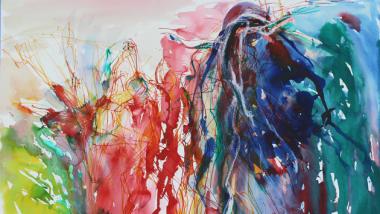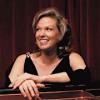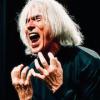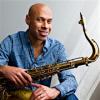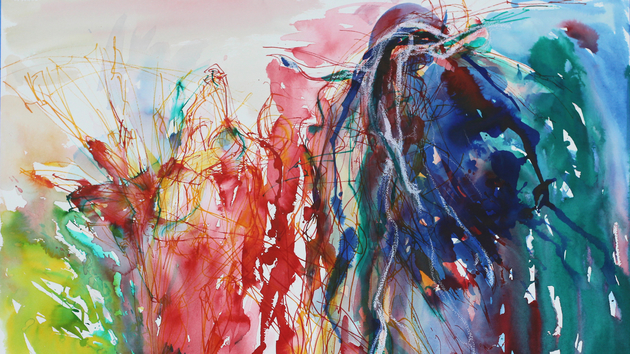
The most fruitful, hopeful research results and possibilities about music and the mind spring counterintuitively from current studies of people who cannot hear, Alzheimer’s patients who struggle to recall the past, or communities that tap, sing, or play instruments in synchronicity, regardless of the quality of sound they produce. It is these outliers in the landscapes of hearing, memory, auditory perception and processing, and musical talent who are leading experts and scholars to investigate and discover the deep, revelatory frontiers of the human brain as it encounters and responds to music.
Neurologists, brain scientists, psychologists, composers, historians, and the public in general have for many years been aware of the brain’s synaptic connectivity and compartmentalization. Creativity, reason, curiosity — or speech — we now know are not always the product of one brain region alone but, often, of many areas interacting to produce an emotion, thought, memory, motor action, or behavior. Narrowing the field and seeking to present new understandings of the brain’s reception of and response specifically to sound — primarily with the benefit of images and data gathered from fMRI technology — researchers and composers at Stanford University’s annual Music and the Brain Symposium in mid-May aimed to push the envelope.
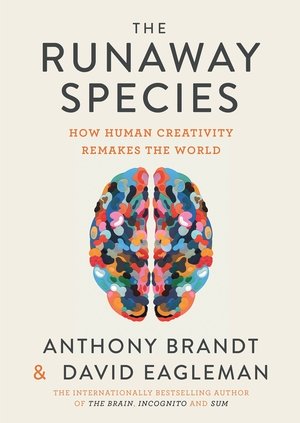
Stanford University neuroscientist/best-selling author David Eagleman (The Brain, Incognito) and Rice University professor/composer Anthony Brandt are co-authors of a book, The Runaway Species: How human creativity remakes the world. In a keynote presentation they introduced developing technology that enables the hearing impaired to experience music and explained the philosophies behind the “three b’s” of the creative practices described in their 2017 book.
Also at the conference, UC Davis professor of psychology Petr Janata shared research exposing how the brain enters and responds to “being in the groove.” One of Janata’s current projects includes patients with Alzheimer’s and is focused on improving their quality of life through increased understanding of how music-related memories endure, despite the study subjects’ significant cognitive losses due to the disease. Applying other data and research to community music-making, Janata’s lab is also identifying the positive impact of group music creation on social cooperation, human empathy, and altruism.
If the “Big B’s” of classical music begin with Beethoven, Bach, Brahms, Berlioz, and others, the lower case “b’s” — bending, breaking and blending — are techniques those composers likely used in their work, according to Eagleman and Brandt. “There’s nothing humans lay their hands on that they don’t want to reshape,” says Brandt in phone interview in mid-June. “It’s at the root of everything human beings have accomplished.”
When creative people bend, break, or blend familiar models, adding novelty, the brain is both comforted and stimulated. “If we could run totally on autopilot, respond instinctively, we wouldn’t need to be conscious,” Brandt says. “We wouldn’t need to forecast, imagine possible futures. But because we are social, we can’t afford to be on autopilot. As anyone in a relationship knows, you still want after 20 years to feel a partner is aware of you. If the world became overly predictable, we’d tune out. We’re built for the first surprise when the brain lights up, but over time, as we see the surprise 20 times, the brain no longer lights up.”
But if the brain listening to music cares about stability and is stimulated by disruption, it doesn’t care in the least if music arrives from your ears or your ankles. Neurological experts including Eagleman and other brain scientists tell us that regardless of the original physical source, the brain is concerned only with patterns it receives as data. Which means in today’s progressive, wearable tech environment that people with significant hearing impairment will soon experience — and dance a tempo to — music delivered to the brain not through ear follicles but by newfangled sensory vests or eventually, Fitbit-like wristbands.
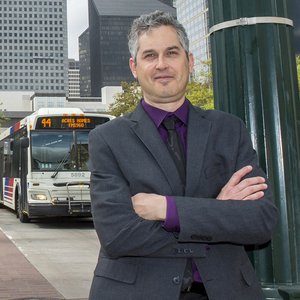
“I’ve not worn the vest David had on at the conference, but I’ve tried the wristband,” says Brandt. Eagleman with a student, Scott Novich, developed the NeoSensory Vest that converts sounds into vibration patterns. Delivered through the torso, the patterns bring music to the brain. A similar-capability wristband is in development. “The follicles in the ear, hit by different frequencies, send a message to the brain,” Brandt explains. “The bracelet [or vest] takes the place of the inner ear. I remember asking David how you attach it to the brain. He said the brain [doesn’t care about source], it just cares about the pattern that comes in through your skin. Your brain analyzes the patterns.”
Brandt likens experiencing vibrations in air — music — through alternative wearable means to synesthesia. The neurological condition has people experiencing sound as colors or patterns. “There are a lot of different versions of reality. People with synesthesia are often shocked to find out that other people don’t experience sounds as colors,” he says. The opportunity for people with hearing disabilities to enjoy a symphony, jazz tune, rock ’n’ roll classic, or any other genre of music, Brandt says, extends and has infinite implications for composers and educators.
When asked if this changes his overall artistic purpose, Brandt is likely to say, “I protect consciousness.” In a world of many challenges, he says, “Art is the lesson of how we hold humanity together.” Later, he layers acuity and unlimited human curiosity onto the topic of art’s value. “The arts constantly keep us awake. [Hungarian novelist] Arthur Koestler says that creativity is the breaking of habit through originality. You know, there are birds who make beautiful sounds, but they say the same thing over and over again their whole lives. No human being would ever be satisfied by doing that. We don’t want to be slaves of habit.
“It’s good that creativity in other animals shows us that it exists and then is expanded in human beings. Sitting with my son in a huge stadium at a baseball game with 30,000 people with hot dogs and beers being served, a huge screen showing everyone when a home run is hit, I thought, would any other species understand this? That’s our contribution. I hope it’s making the world a better place.”
At the same time Brandt celebrates human creativity and the technological advances that bring music to more people, he’s reluctant to end a conversation on music without expressing concern about challenges and restrictions placed on today’s young composers.
In an extraordinarily diverse world, he says, “Understanding the science is important. The better I understand the brain, the better a composer I am. Beethoven didn’t have to be a scientist because in his time he could look out at a world in which everyone went to the same church, read the same books. Our world is much more complex.”
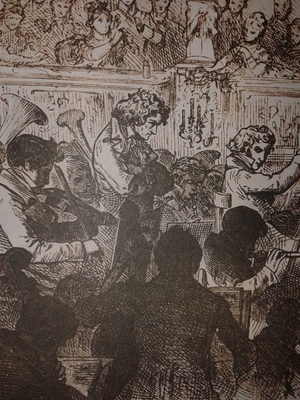
Abundant access to music further complicates the picture. “Beethoven’s fifth and sixth symphonies premiered in the same concert. For some people, it was the only time they’d ever hear that music. It was a one-time thing: I wonder what the level of attention must have been? Now, there’s a casualness, versus then, when everything was perishable.”
Self-curation creates additional complexity. “That’s one of the fundamental challenges of modern time,” Brandt claims. “The thing that makes 21st-century repertoire different is that the culture has no common practice. For the first time ever, there’s no shared style, the sky’s the limit. You can go to a concert where there are five different kinds of music that have nothing to do with each other. There’s no shared standard that makes Steve Reich’s and Pierre Boulez’s music come out on top. It’s fragmentary and diverse, so how do you tell what’s good and what’s not?”
Circling back to what anyone can recognize — the pleasure of recurrent motifs in a symphony or the return of the chorus of a song — part of the answer comes from feeding the brain’s craving for repetition. Yet for focus and sustained attention, research proves disruption is essential. Therefore, the “good” or “best” compositions (and books, ballets, meals, travel, relationships, and other aspects of human existence) must meet expectations but include bent, broken, or blended elements of surprise. A composer’s task is therefore to find a perfect balance between cherished familiarity and astonishing novelty.
Asked what is lacking in arts education today, Brandt had a lot to say. His primary concern is the imbalance in access to arts education, especially for disadvantaged communities. Schools with overly-cautious, passive listening curriculums are nearly as regrettable. Playing an instrument or singing in a choir in his opinion is vital for future creativity. “There’s a difference between playing on the field or sitting in the stands. It’s so much more fun to play on the field. Yet we have a society that is more often watching from the stands. That feels safe, but that’s not really living. Instead, school should be like a trampoline. Fall, bounce back up. This is living.”
For people with Alzheimer’s, living narrows as the condition progresses. Which is why Janata’s research is cause for hope. The opportunity to improve the lives of people whose memories are impaired, he says in a phone interview in mid-June, involves two memory systems.
Parts of the brain’s sensory motor area store aspects of movement related to making music. At the same time, the medial prefrontal cortex adds associated emotions of self and social knowledge. These two regions, according to Janata, atrophy more slowly in the brains of people with Alzheimer’s. “When familiar music triggers autobiographical memories, additional regions become active,” he says. “Photos and smells are other sensory triggers that also stimulate the remembering response. But music is unique. New experiments we’ve just completed get at the basic method of how music is associated with these memories. Music is uniquely powerful because it’s a sustained, dynamic, retrieval cue. Singing out loud or even just in your mind, you’re provided (additional motor-related) opportunities to trigger the associated memories. A static image like a photo is unlikely to do the same thing. An evocative word or phrase doesn’t have the rich, dynamic, motor component of music.”
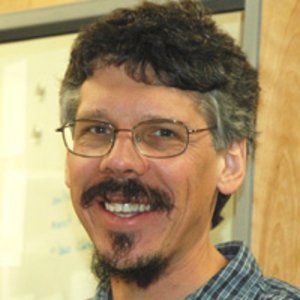
The remote memories triggered by music most often attach to positive emotions. Alternatively, word cues like “Tell me a memory of when you were a teen,” Janata says tend to elicit embarrassing, emotionally volatile, or obscure memories.
At the conference, Janata says he was most struck by composers whose work flipped the lid on conventional approaches to writing new music. “[Pianist Elaine Chew] played one piece, an etude. Then she played a transcription of her learning to play the piece. She played from a score that was her first attempt to learn that piece.” Chew had recorded herself playing as she learned, capturing the timing, which notes she hit and how hard she hit them. That recording was used to create a new score. “She practiced it so she could perform exactly that first time experience,” says Janata.
Another composer’s work featured an interesting juxtaposition of concepts. “It used a heart arrhythmia to transform existing pieces that were modified by the physiological rhythms. People talk about how music effects autonomous systems, but this reversed this process.”
The impact of listening to or performing music on blood pressure, breathing, and other human functions is the most basic component of Janata’s studies that expand to include the effect of music-making on communities. “Music has evolved because of the social bonds it helps create. That’s the driving reason. When people make music together and it’s successful, they’re more likely to cooperate with each other. Even in another environment entirely, like doing something for the good of the village,” he says.
The data from the past 10 years is compelling. The key element is synchronized behavior, like the methods found in drum circles, choirs, and instrumental ensembles. “Our brain is engaged whenever we have effortful experiences with our environment that require control. When you must constantly adjust your own behavior to make the group function better, that requires a lot of control. That cognitive control circuitry relaxes when the brain reaches ‘the groove.’ The active parts of the brain help to form positive social bonds. Presumably, the synaptic modifications about whoever you are making music with mean you’re subsequently more willing to help out that person.”
The Groove Enhancement Machine is one system Janata has developed that facilitates group synchronization. He describes it as an adaptive metronome that has been extended by his lab to a four-person version. “It’s looking promising. If you can take a simple device like this and bring it into group settings, negotiations between world leaders for example — If you can get meaningful, positive musical interactions, it could make them want to cooperate more. Unfocused kids in classrooms who aren’t getting along, or politicians, many situations could benefit.”
A Few Final Thoughts on Music and the Mind
The corpus callosum is a bundle of nerve fibers that connect the brain’s left and right cerebral hemispheres. Like a musical masterpiece, it interweaves strengths and particularities from myriad sources. Through structure, order, repetition, variation, and the winnowing of excess or unintentional distractions, the corpus callous allows us to have coherent, complete expressions.
The same principles understood by a composer might result in standing ovations and a long-lasting work of art. What succeeds in the brain is knitting together separate strands. When we play music, our brains are doing all that work and telling us that music matters.

